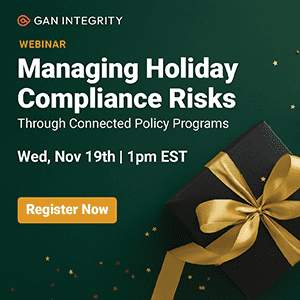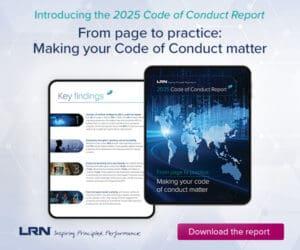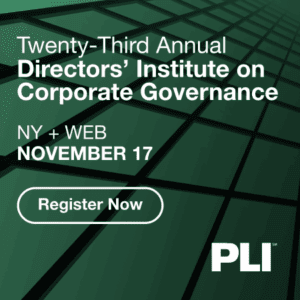While some organizations thrive amid constant market upheaval, others struggle to adapt quickly enough to remain competitive, often due to unexamined assumptions and inadequate preparation for technological and strategic shifts. Jim DeLoach of Protiviti presents a framework of strategic questions across five domains — from business model evolution to AI governance — that leaders can use to honestly assess their organization’s disruption readiness and competitive positioning.
The 2020s have emerged as one of the most disruptive decades in recent memory, demanding that organizations understand markets, examine assumptions and take decisive action. For leaders navigating this landscape, asking the right questions can facilitate strategic thinking and better positioning along what researchers call the “disruption continuum.”
Protiviti’s recent global board governance survey, conducted with BoardProspects and Broadridge Financial, captured insights from over 1,800 board members and C-suite executives worldwide regarding the business realities of disruptive change. The research reveals distinct characteristics that separate disruptive leaders from other organizations — including disruption aspirants, agile followers and vulnerable disruptors.
A key finding: Even agile followers can achieve success by focusing on their markets, making data-driven decisions and pivoting when necessary. The research suggests that companies should learn from disruptive leaders’ actions and identify opportunities to improve how they manage inevitable marketplace changes, whether as opportunistic disruptors or agile responders to disruptive trends.
The survey data points to specific areas where strategic questioning can help organizations assess their readiness and positioning. The following questions, organized across five critical domains, provide a framework for directors and senior executives to evaluate their organization’s approach to disruption.
Strategy & business model
The survey highlights the rapid pace of disruption impacting business models and industries, emphasizing the shrinking duration of competitive advantages like size, scale, brand differentiation and high switching costs. Three-fourths of survey respondents noted that their organizations expect major business model changes within three years.
Change is in the air, requiring adjustments to corporate strategies and business models. Further, 75% of respondents with disruptive leaders expressed confidence in their organization’s ability to identify, respond to and take advantage of disruptions. They also noted that their ability to focus on disruption-related opportunities results primarily from delivering superior customer experiences through business model innovation, building superior infrastructure and capabilities to scale new products and differentiating market offerings through significant pricing or quality advantage.
Questions for leaders
- Is our organization truly customer-centric? For example, are we sufficiently focused on enhancing the customer experience? Is driving value for the customer a critical factor in our decision-making to sustain the relevance of our business model and its underlying processes?
- Have we identified potential industry or market disruptions that may affect our strategy and business model? Have we played out the effect of these disruptive scenarios to understand the extent of their impact on our business and how best to counter them, including actions we should take near-term to prepare?
- Do we understand the most critical assumptions underlying our strategy? Are we monitoring the external and internal factors that could render one or more of those assumptions invalid?
- Do we have an early-warning capability in place, such as a dashboard of vital signs or early alerts derived from ongoing analyses of disruptive scenarios and key assumptions underlying our strategy? Do we monitor the dashboard for changes in markets and customers as well as the economy and competitive environment, just as we monitor the execution of the strategy itself?
- Are we prepared to implement changes to our strategy and business model that may be necessary to respond to disruptive trends and events and emerging risks or when one or more of our strategic assumptions are no longer relevant? Do our decision-making processes enable the high-velocity, high-quality decisions that enable us to be agile and resilient?
- Do we have the leadership, talent and skills in place to navigate change and execute the necessary adjustments to our business model and strategy? If not, how are we filling the gaps to build and sustain a workforce that is resilient and equipped with diverse skills, perspectives and a high level of change readiness? Are we regularly assessing our digital capabilities as a core competency?
- Are we satisfied that our brand engenders trust in the markets we serve? If not, why not? Are our customer-facing processes consistently delivering on our brand promise? Is our organization transparent in its communications and efforts to engage with customers, suppliers and other stakeholders? For example:
- Are we true to our values and authentic in our storytelling?
- Do we genuinely listen to our customers?
- Do we clearly convey our commitment to data privacy and security?
- Do our partnerships with other organizations enhance our credibility and trustworthiness?
- Are we leveraging customer, market and other insights to inform data-driven decisions regarding customer preferences, competitor actions and operational improvements? Are feedback loops in place to engage customers, suppliers and other external parties that broaden employee participation, invigorate the innovation process and help eliminate unconscious bias in decision-making?
AI & other technologies
Generative AI promises effects ranging from game-changing to damaging based on an organization’s disruptor status. Over 70% of disruptive leaders view generative AI as an opportunity, while more than two in five organizations that are susceptible to disruption see it as a threat. Indeed, the adoption of generative AI tools is yielding major productivity improvements. Further, agentic AI offers even greater value as an extension of the human workforce.
The mix of opportunity and risk presented by AI necessitates that boards and C-suites focus on disruption risk and integrate technology with risk governance and enterprise risk management programs. According to our survey, governance discussions and actions vary significantly based on a company’s proficiency in managing disruption.
Questions for leaders
- How are we preparing for potential future developments in AI technologies and adapting them to our business as our strategy evolves? Do we have a long-term vision for deploying AI in our organization and how its deployment fits within our organization’s overall strategy? What specific business problems or opportunities are we planning to address with AI over the next two to three years?
- If we view AI deployment as more of a risk, is our perspective constraining our realization of the opportunities these capabilities offer?
- What governance structures do we have in place to enable experimentation with AI capabilities and implementation of selected use cases while ensuring responsible deployment?
- How are we sourcing and managing the integrity of the data used to train our AI models?
- How will the customer experience be affected by the deployment of AI?
- How are we addressing the relevant legal, regulatory and ethical issues?
- How will these systems and the vendors supporting them be integrated with our existing processes and technologies to ensure seamless fit, scalability and ease of use?
- Do we have the necessary talent and skills needed to succeed in harnessing the full value of our AI investments? Are we investing in ongoing training and development, including necessary upskilling, as we move forward with our technology investments?
Technology modernization
The accelerating pace of technological advancement is on everyone’s radar. Survey respondents, regardless of their organization’s positioning as either disruptors or susceptible to disruption, rate it as their most significant concern. Whether an organization leverages technological disruption as an opportunity or scrambles to mitigate its negative effects depends heavily on the sophistication, maturity and agility of its technology environment.
Among disruptive leaders, 72% have high confidence in modernizing their technology infrastructure to address disruption risks, compared to 37% of other organizations and only 12% of those companies classifying themselves as disruption laggards. On a related note, the survey results indicate that disruption laggards are more than twice as likely as disruptive leaders to view excessive technical debt from legacy technology infrastructure as the most significant barrier to responding to disruption in an agile manner. Interestingly, confidence levels vary by industry, with technology companies expressing higher confidence than healthcare organizations.
Questions for leaders
- Do we have a clear understanding of the lessons learned from our modernization investments over recent years? Are we thinking out of the box and taking the best approach to modernize? For example, do we buy, build or deploy a hybrid approach? Do we have the right partners? Are we breaking down large investments into discrete, manageable components?
- Are there any barriers that impede our efforts to modernize our technology infrastructure? For example, if we face capital and resource constraints and/or scaling challenges, how are we addressing them?
- What is the current level of technical debt associated with our organization’s legacy systems? How do we assess the risks of our technical debt, particularly its impact on our ability to innovate and compete with digitally mature companies? What is our strategy for reducing our technical debt?
- What governance structures are used to evaluate and prioritize our modernization initiatives?
Barriers to being a disruptor and responding to disruptions
Survey respondents identified several other barriers to being disruptive that vary considerably based on their organizations’ disruption status. Among disruptive leaders, directors and C-suite executives are focused more on addressing regulatory constraints, finding new sources of capital to fuel research and development and developing new ways to scale rapidly to meet surges in demand.
Among organizations defined as agile followers and disruption laggards, their boards and C-suite executives are much more concerned about talent- and culture-related challenges, such as resistance to change in the organization and lack of an innovative culture to think creatively. These results indicate that disruptor organizations and those companies susceptible to being disrupted face different issues.
Questions for leaders
- Is driving value for the customer a critical factor in our decision-making in identifying and overcoming internal barriers to putting customer preferences and expectations first?
- Are there any other barriers not referenced above that hamstring our ability to respond timely to industry disruptions? Do we have an actionable plan in place to remove or overcome these barriers? Is the plan working effectively?
- Does our talent strategy enable us to inculcate an innovative organizational culture that embeds innovation into our operating model and prioritizes and rewards continuous learning, experimentation, creative thinking and risk-taking?
Agility and resilience in responding to disruption
Organizations’ perspectives on emerging technologies are influenced by whether they see themselves as disruptors or as being susceptible to disruption. Disruptive leaders are more agile, innovative and prepared to embrace change, while those at risk of being disrupted view themselves as less agile, with talent and culture as barriers to staying ahead of disruptive changes.
Questions for leaders
- Is agility a core mindset in our business? Are we creating flexibility and infusing agility into our operating principles and processes to navigate inevitable change in the markets we serve?
- What do our disruption-related concerns say about our need to improve our preparedness and response readiness? How would improvements to our ability to pivot our strategy, processes and organizational structures timely in response to new opportunities or threats translate to increased C-suite and boardroom confidence in our ability to manage disruption risk? For example, are we fostering lean behaviors with an open, flexible and empowering organizational structure and flat hierarchy? Do our structure and hierarchy drive efficiencies, accelerate innovation cycles and facilitate collaboration, communication, transparency, rapid decision-making and customer-focused execution?
- Are we proactive and comprehensive in our approach to preparing for an unexpected crisis to minimize its impact and safeguard our stakeholders and assets? Does our approach encompass risk assessment, formulating response plans to specific scenarios, robust communication strategies, periodic testing of crisis management plans, crisis post-mortems and continuous improvement?
- What steps do we need to take to better integrate disruption risk into our organization’s overall risk governance, e.g., scanning the business environment, assessing potential disruptive scenarios and developing actionable response plans to mitigate risks?
Summary
These questions highlight the need for senior executives and directors to stay closely connected to the marketplace, customers and other stakeholders. To survive and thrive in disruptive markets, leaders must recognize when change is necessary based on reliable, insightful data regarding market opportunities and emerging risks and act decisively to drive the required change within their organizations in a timely manner.
We hope that our research and the above questions will stimulate leaders’ thinking as they assess the competitive landscape, potential disruptors and their desired positioning on the disruption continuum.




 Jim DeLoach, a founding
Jim DeLoach, a founding 








